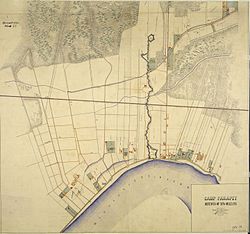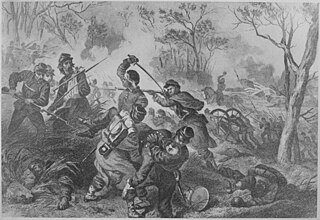
The siege of Port Hudson was the final engagement in the Union campaign to recapture the Mississippi River in the American Civil War. While Union General Ulysses Grant was besieging Vicksburg upriver, General Nathaniel Banks was ordered to capture the lower Mississippi Confederate stronghold of Port Hudson, Louisiana, to go to Grant's aid. When his assault failed, Banks settled into a 48-day siege, the longest in US military history up to that point. A second attack also failed, and it was only after the fall of Vicksburg that the Confederate commander, General Franklin Gardner, surrendered the port. The Union gained control of the river and navigation from the Gulf of Mexico through the Deep South and to the river's upper reaches.

United States Colored Troops (USCT) were Union Army regiments during the American Civil War that primarily comprised African Americans, with soldiers from other ethnic groups also serving in USCT units. Established in response to a demand for more units from Union Army commanders, by the end of the war in 1865 USCT regiments, which numbered 175 in total, constituted about one-tenth of the manpower of the army. Approximately 20 percent of USCT soldiers were killed in action or died of disease and other causes, a rate about 35 percent higher than that of white Union troops. Numerous USCT soldiers fought with distinction, with 16 receiving the Medal of Honor. The USCT regiments were precursors to the Buffalo Soldier units which fought in the American Indian Wars.

Fort Pickens is a pentagonal historic United States military fort on Santa Rosa Island in the Pensacola, Florida, area. It is named after American Revolutionary War hero Andrew Pickens. The fort was completed in 1834 and was one of the few forts in the South that remained in Union hands throughout the American Civil War. It remained in use until 1947. Fort Pickens is included within the Gulf Islands National Seashore, and as such, is administered by the National Park Service.
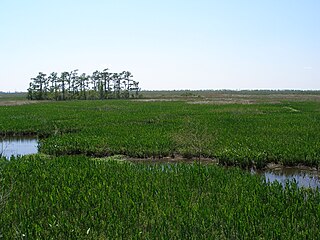
Jean Lafitte National Historical Park and Preserve protects the natural and cultural resources of Louisiana's Mississippi River Delta region. It is named after French pirate Jean Lafitte and consists of six separate sites and a park headquarters.

Henry Watkins Allen was a member of the Confederate States Army and the Texian Army as a soldier, also serving as a military leader, politician, writer, slave owner, and sugar cane planter.

The Battle of Grand Gulf was fought on April 29, 1863, during the American Civil War. Union Army forces commanded by Major General Ulysses S. Grant had failed several times to bypass or capture the Confederate-held city of Vicksburg, Mississippi, during the Vicksburg campaign. Grant decided to move his army south of Vicksburg, cross the Mississippi River, and then advance on the city. A Confederate division under Brigadier General John S. Bowen prepared defenses—Forts Wade and Cobun—at Grand Gulf, Mississippi, south of Vicksburg. To clear the way for a Union crossing, seven Union Navy ironclad warships from the Mississippi Squadron commanded by Admiral David Dixon Porter bombarded the Confederate defenses at Grand Gulf on April 29. Union fire silenced Fort Wade and killed its commander, but the overall Confederate position held. Grant decided to cross the river elsewhere.
Fort Howell is an earthworks fort built in 1864 during the American Civil War, located on Hilton Head Island, South Carolina. It was named in honor of Union Army Brigadier General Joshua B. Howell, and Its primary function was to protect Mitchelville, a Freedman's town located to its east.

Jean-Jacques-Alfred-Alexandre "Alfred" Mouton was a Confederate general in the American Civil War. Although trained at West Point, he soon resigned his commission to become a civil engineer and then a sugarcane grower, while also serving as a brigadier general in the Louisiana State Militia.
The Battle of Fort Bisland was fought in the American Civil War between Union Major General Nathaniel P. Banks against Confederate Major General Richard Taylor during Banks' operations against the Bayou Teche region in southern Louisiana.
Shrewsbury Cemetery, historically known as Camp Parapet Cemetery, is an old burial ground near New Orleans, Louisiana, on the site of a Confederate military camp during the American Civil War. The cemetery is the burying ground of Ross Church and First Zion Church, both located nearby. It is also sometimes known as First Zion Cemetery.

Halbert Eleazer Paine was an American lawyer and Republican politician. He served as a Union Army general during the American Civil War, and after the war was elected to three terms in the United States House of Representatives representing Wisconsin's 1st congressional district.

The Battle of Baton Rouge was a ground and naval battle in the American Civil War fought in East Baton Rouge Parish, Louisiana, on August 5, 1862. The Union victory halted Confederate attempts to recapture the capital city of Louisiana.

New Orleans, Louisiana, was the largest city in the South, providing military supplies and thousands of troops for the Confederate States Army. Its location near the mouth of the Mississippi made it a prime target for the Union, both for controlling the huge waterway and crippling the Confederacy's vital cotton exports.

Camp Moore, north of the Village of Tangipahoa near Kentwood, Louisiana, was a Confederate training base and principal base of operations in eastern Louisiana and southwestern Mississippi. The base was named for Louisiana Governor Thomas Overton Moore. It operated from May 1861 to 1864 during the American Civil War. Confederate monuments were erected at the cemetery and on the grounds in the early 20th century.

Liendo Plantation is an historic cotton plantation in Waller County, Texas, United States. Named after its original owner, José Justo Liendo, the plantation was purchased in 1873 by sculptor Elisabet Ney and her husband, physician Edmund Montgomery.
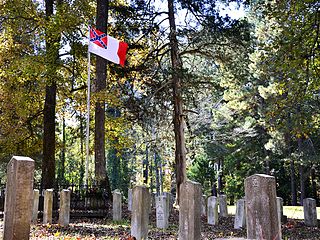
The Camp White Sulphur Springs Confederate Cemetery is an American Civil War cemetery in Arkansas. It is located northeast of the village of Sulphur Springs, also known as White Sulphur Springs, in Jefferson County.
The 12th Connecticut Infantry Regiment was an infantry regiment that served in the Union Army during the American Civil War.
George H. Hanks was an abolitionist and civil rights activist and colonel in the US Civil War.

The 47th Massachusetts Infantry Regiment was a regiment of infantry that served in the Union Army during the American Civil War. It was one of the 18 Massachusetts regiments formed in response to President Abraham Lincoln's August 1862 call for 300,000 men to serve for nine months. The unit was known as the "Merchant's Guard Regiment" having been recruited primarily through the efforts of Boston merchant Lucius B. Marsh, who became the regiment's Colonel and commanding officer. The regiment's service was unusual in that it never saw combat as a full regiment. Two detached companies saw minor skirmishing without casualties. Instead of active combat duty, the regiment served guard and provost duty in various camps and fortifications in and about New Orleans, Louisiana.
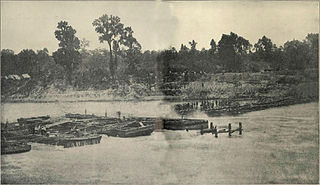
The 97th United States Colored Infantry was an engineer regiment designated as infantry as part of the United States Colored Troops that served in the Union Army during the American Civil War and fought in the Western Theater of the American Civil War in the Department of the Gulf. The regiment mustered in at Camp Parapet April 28, 1863, as the 1st Louisiana Engineers, but two companies, D and F had been hastily mustered into service two days earlier, April 26, 1863, and sent to Berwick City to remove obstructions from the Bayou Teche. The enlisted men of the 1st Louisiana Engineers were formerly enslaved men in the “engineer camp” who had been previously providing labor for the U.S. Army between New Orleans and Baton Rouge. Several of the newly commissioned company grade officers had been enlisted men of the 42nd Massachusetts Volunteer Infantry who had been on engineer service superintending the contraband laborers from the camp. In the summer of 1862, General Phelps had previously requested to arm the men at Camp Parapet and put them in uniform to defend the city of New Orleans but his request was denied. Gen. Banks ordered Phelps to have the men cut down all the trees between Camp Parapet and Lake Pontchartrain. Phelps resigned over the issue stating, "...while I am willing to prepare African regiments for the defense of the government," he continued, that he " was not willing to become a mere slave driver."



